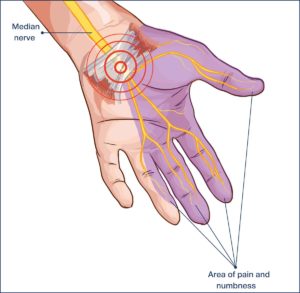
Wrist Osteoarthritis
Typical Symptoms
Osteoarthritis (OA) of the wrist joint can lead to pain, limited movement, stiffness, swelling and functional impairment of the joint. There can also be a degree of weakness due to the pain symptoms.

What causes it?
OA of the wrist joint is a degenerative (wear and tear) process that is usually blamed on “over-activity”, but more commonly it is due to a previous injury to the joint that progresses to OA. Often it may be a minor trauma in the past that has triggered off the changes and these are exacerbated by loading on the joint.
How can I help myself?
In pain-limited cases, using splints, doing exercises and applying topical anti-inflammatory gels can help reduce symptoms. Modifying activities or using aids to help with daily activities can reduce pressure on the joint and improving strength can help to limit progression.
When to seek help?
If the symptoms (pain or limited movement) are interfering with your daily, occupation or recreational activities, or if it is progressing in this way, it might be suitable to seek further attention.
What are the treatment options?
Your clinician will undertake a history and clinical examination before further investigations which may include an X-ray, to look for global degenerative changes, or an ultrasound to identify inflammation or joint swelling.
If suitable, hand therapy or physiotherapy can be instigated to reduce pressure on the joint itself, but in situations where pain limits these activities, an ultrasound-guided injection of cortisone or PRP injection might help reduce symptoms. If this ineffective, a surgical intervention might be appropriate with treatment tailored according to symptoms.








